Feature
Designing for Future Action
How STEAM Programming Can Support Youth Engagement in Community Changemaking Projects
Connected Science Learning January–February 2022 (Volume 4, Issue 1)
By Mairéad Hurley, Abby Rhinehart, Philip Bell, Autumn Brown, Nancy Price, and Joseph Roche
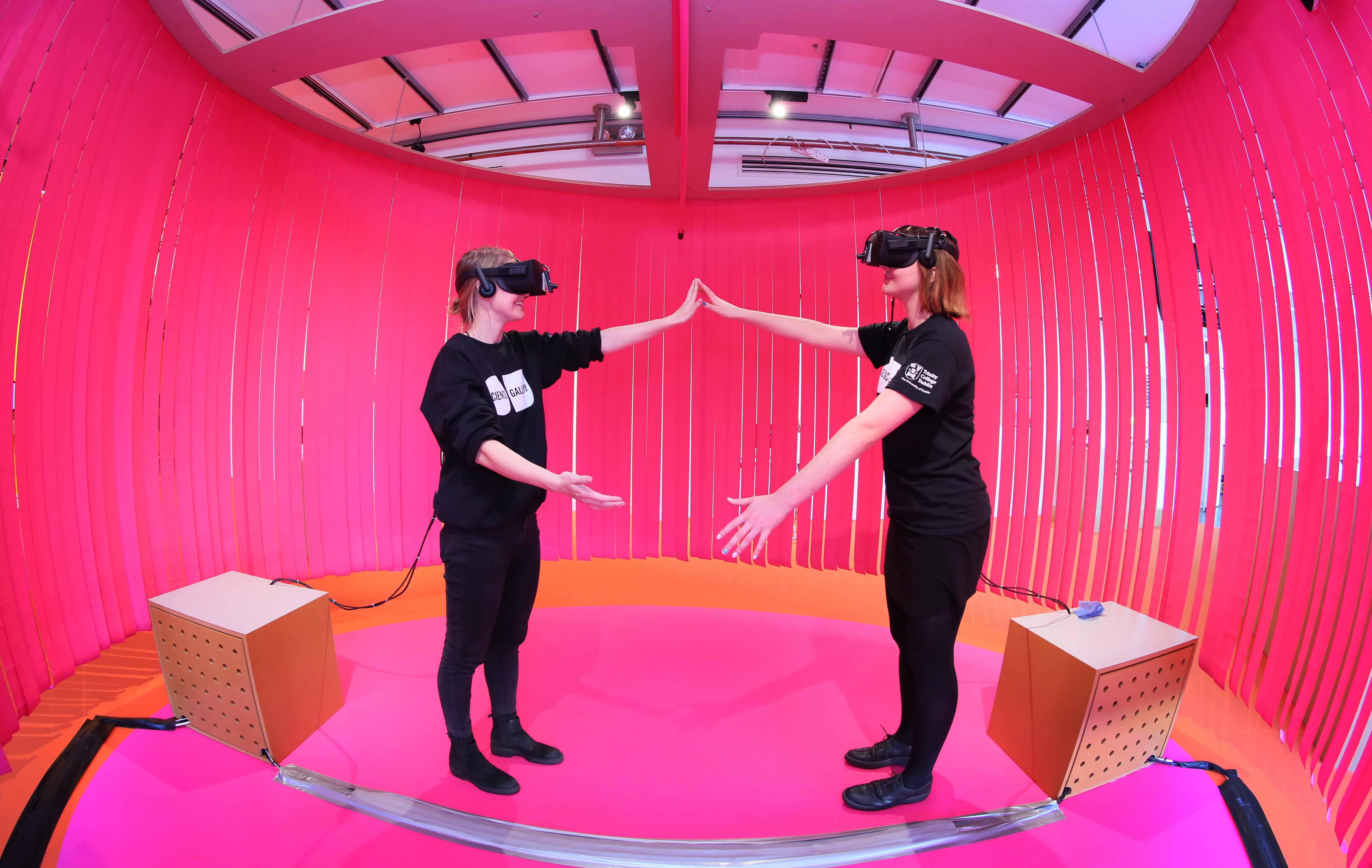
A key form of scientific literacy is being able to leverage the knowledge, practices, and commitments of ethical science to everyday civic matters of social consequence. Learning how to engage in civic life in equity-focused ways needs to be intertwined with learning disciplinary—or transdisciplinary—knowledge and practices. In this article we discuss how an art-science learning program at Science Gallery Dublin in Ireland supported subsequent civic participation by adolescent youth. Using longitudinal case studies of young people, we document how they became agents of change in their homes, schools, and wider communities over several years after participating in the program. This work provides insight into how specific design features of informal learning environments help launch or expand the science-linked identities of youth interested in participation in civic life and social action. These cases also illustrate how to develop educational models that support young people to take informed action toward matters of community and environmental consequence, a key aspect of building a more sustainable and thriving future.
Theoretical Basis: Equity Dimensions of Art-Science Learning
The theoretical basis of the informal art-science learning program described in this article has been developed through a research-practice partnership between Science Gallery Dublin and the University of Washington. In this section, we outline three key equity dimensions identified by this research-practice partnership, which Science Gallery Dublin strives to realize through program design and facilitation, research, and organizational strategy.
Designing for Engagement With Equity
To keep our educational work grounded in equity and justice movements, we theorize how youth can learn about and consider joining existing social movements around specific consequential matters like environmental protection and mental health activism in deepening ways over time (Jurow and Shea 2015). From a design perspective, this involves centering ethical deliberation and critical consciousness development while working to collectively imagine a desired, more equitable future. We use critical design practices in the art-science program to support the imagination and creativity of youth in response to troubled conditions in the world. We also broker opportunities for youth to join relevant social movements.
Supporting Extended Cultural Learning Pathways Through Disciplinary and Transdisciplinary Learning
We work from the assumption that the development of disciplinary knowledge and identities are key to informed participation in social movements. Theories of free-choice learning highlight the significant role of interest and identity in shaping whether young people stay involved in out-of-school activities (Falk et al. 2007). Given that the development of scientific literacy develops across a learner’s lifetime, over many years of deepening participation in disciplinary practices (Bell et al. 2012; Azevedo 2011; Calabrese Barton and Tan 2018), we know that our weeklong program can only launch or support this prolonged engagement. However, this can be done intentionally through careful design of the program. The cultivated spaces open up “scopes of possibility” for deeper engagement in the integration of multiple ways of knowing—and support the development of youth interests and identities (Bell et al. 2012).
Social and Material Support for Youth Civic Participation
Adolescence is a crucial time for youth to explore and identify social identities and enterprises of longer-term interest—including participation in civic life (Lee, White, and Dong 2021). In some cases, youth learn to extend their learning pathways from the program environment to home, school, community, or national scales of deepening social action. We analyze those cases to better understand how learner agency develops to resist and work to transform established structures in society—to enact more just, thriving, and sustainable futures. People seeking to engage in sustained social action need ongoing social and material support (Barron and Bell 2015), which can be provided in part by informal educational institutions.
Science Gallery Dublin: Engaging Young People in Critical Conversations at the Intersection of Science and Art
In 2008, Science Gallery Dublin was founded in Trinity College Dublin as a cultural space with a focus on engaging young adults in conversations about science and art. Science Gallery Dublin creates programs in response to broad, transdisciplinary themes. For example, a 2018 season entitled FAKE included exhibits related to biomimicry, psychology, and food science, while INVISIBLE in 2020 explored the scientific mysteries of dark matter and dark energy, but also looked at systems of oppression and injustice that have rendered certain groups or individuals as “invisible” in historical narratives of scientific discovery. The majority of exhibition pieces are selected through an open call, which invites contributions from artists, scientists, researchers and any other creative producers. Residencies and commissions provide a platform for the development and exhibition of new transdisciplinary work.
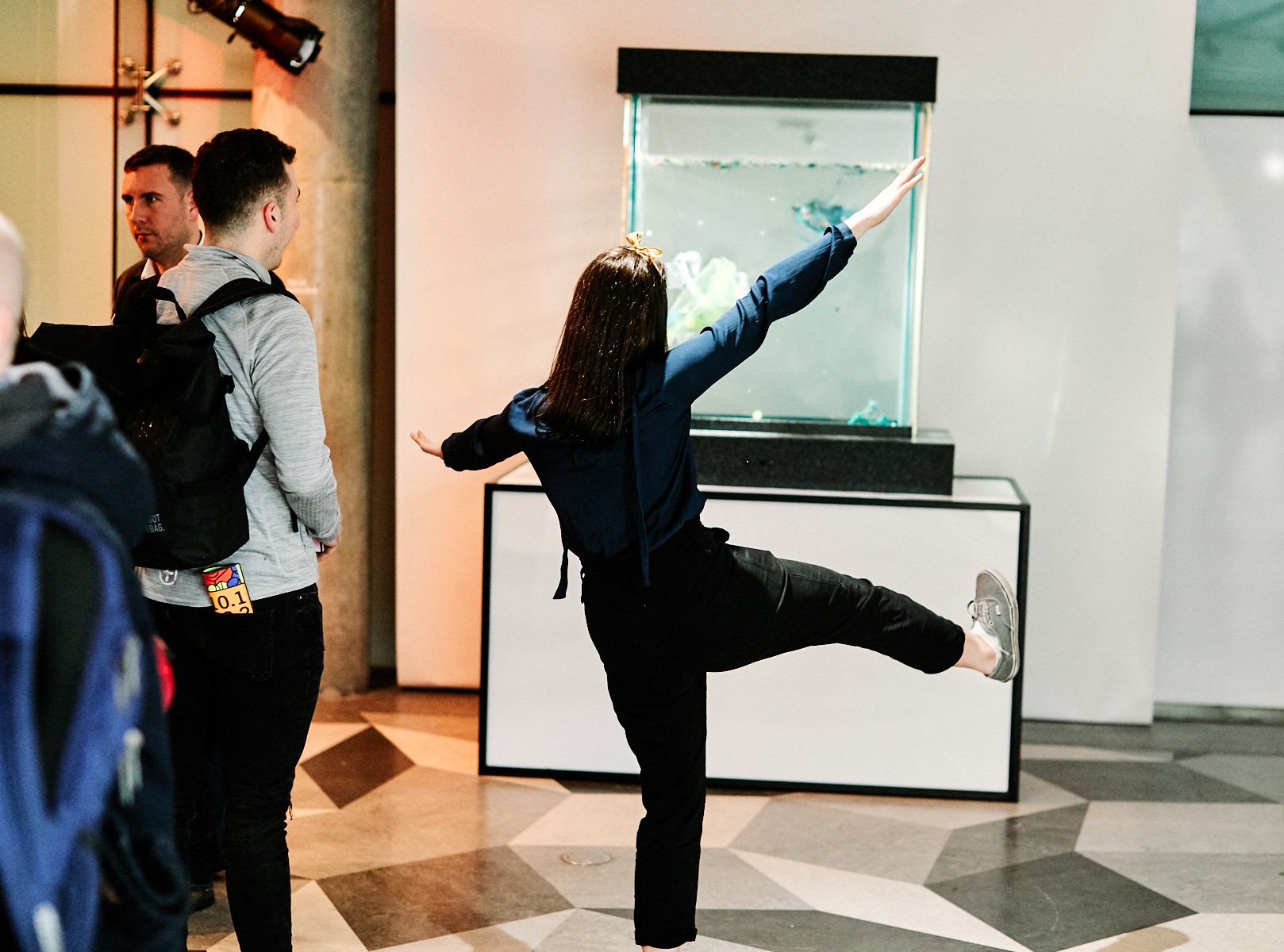
OPEN MIND Studio: A youth art-science learning program
Learning programs in Science Gallery Dublin are designed to allow young people to delve deeper into an exhibition topic through hands-on transdisciplinary activities. OPEN MIND Studio is a program for a group of twenty 15- to 17-year-olds, held over five consecutive days. The vast majority of the students who participate in OPEN MIND Studio are in the “Transition Year” of their secondary school education. This is an optional year for Irish students that aims to provide them with an educational experience that encourages independent and self-directed learning, including engagement in career guidance and out-of-school programs. OPEN MIND Studio is open to young people from all across Ireland. An effort is made to ensure gender balance. Forty percent of all places are reserved for youth attending schools that are part of the Irish government’s Delivering Equality of Opportunity in Schools action plan for education inclusion, serving communities of low socioeconomic status.
Learners in OPEN MIND Studio are accompanied throughout the week by two facilitators whose roles are to co-lead the program and deliver a number of the workshops. Topic-specific expert guests deliver other program segments. Facilitators usually come to OPEN MIND Studio after spending some time working in Science Gallery Dublin as a mediator, interacting with the public on the exhibition floor, but generally they do not have other prior pedagogical training or teaching experience. They have varied backgrounds, more often than not having completed one or more years of higher education in either science or the arts. Where possible, facilitators are paired to have complementary backgrounds covering both science and the arts to align with the transdisciplinary program approach.
OPEN MIND Studio: Learning Design Features
OPEN MIND Studio aims to extend the exhibition experience and invite young people to explore the combination of art and science in greater depth through the specific topic addressed. A number of core learning design elements remain consistent across iterations of the program, while individual elements are adapted for each new exhibition theme. These core program design principles include the following:
- Igniting creativity where science and art collide. Youth are introduced to the Science Gallery Dublin approach that breaks down silos between art and science through a tour of the exhibition and follow-on discussion. The aim of the discussions throughout the weeklong program is to encourage critical thinking, reflection, and debate. In addition to open-ended questioning and group discussion, another approach used is to invite participants to physically position themselves along a line representing polarized points of view relating to an ethical provocation. Following an open conversation guided by the facilitators, learners are invited to reconsider their positioning on the line. This strategy invites participants to actively take a stance on a topic—and provides opportunity to alter their opinions—without every person having to vocalize their choices or reasoning.
- Building a collaborative community of learners among strangers. This means actively leveraging youth expertise to support peer learning, getting away from didactic, school-like instruction and encouraging open communication, participation, and self-directed and small-group learning. Facilitators place an extended focus each day on the development of communication skills through verbal and physical icebreakers before the “real work” begins.
- Sequencing increasingly complex disciplinary and transdisciplinary investigations. Young people practice skills in workshops focused on one specific discipline each, such as design or circuit building, which must then be combined to complete a transdisciplinary, synthetic design challenge (e.g., combining circuit building with art activities to collaboratively tell an Irish folktale using electronic dioramas).
- Engaging in consequential, transdisciplinary design projects. Student teams respond to the program theme and develop an innovative solution to a real-world, wicked problem (e.g., the need to reduce plastic waste). In this process, they integrate multiple disciplinary strands. Learners participate in a series of idea-generation exercises borrowed from the toolbox of “design thinking” to scaffold divergent thinking. Prototyping and showcasing the results are also features of design thinking used in this process—participants must represent their ideas visually and materially, and present them to an audience of facilitators, peers, and a panel of staff members. To create their prototype, participants are provided with a range of crafting materials (recycled where possible) and basic circuit-building materials, such as batteries, copper tape, connecting wires, LEDs, and micro-controllers. The inclusion of a drama and improvisation workshop in the weekly program also provides inspiration for participants to represent their ideas through role-playing as well as through physical prototyping should they choose, and they are encouraged to select this option for their final presentation.
- Bridging different perspectives across sessions. Guest experts often bring different, but related, perspectives into the program, such as expertise building circuits or as a studio artist. Facilitators help learners bring coherence to the process—e.g., connecting electronics learning to design thinking frameworks to creative art and design activities, thus scaffolding their learning across the week. The flow of activities feeds into the culminating collaborative design project.
Following these design principles, OPEN MIND Studio facilitators make a concerted effort to build a caring, problem-solving community within the program. Facilitators complete a daily reflective exit ticket process—similar to that described by Tzou et al. (2020), which includes structured reflection on possible roles and program experiences—to build their capacity to differentially support youth learning. This process allows facilitators to reflect on whether all learners were able to contribute and have their voices heard and to consider adaptations to facilitation strategies if some were not participating as much as others. The program team works together to quickly act upon these exit tickets to enact changes the following day, while facilitator insights are also used to inform future iterations of the program.
Longitudinal Study of Participant Learning and Becoming
Daily exit tickets are a practical measure that allow the educators to interrogate how engaged young people are with a topic during OPEN MIND Studio. But how can these educators and program designers gain a broader perspective of how programs fit into young peoples’ processes of becoming and identity development? To that end, a longitudinal ethnographic study was developed to examine the wider learning pathways of a group of young people in the program over several years.
Sixteen students were recruited for the longitudinal study while participating in either OPEN MIND Studio or ARTificial Intelligence Lab, a summer program that followed a similar curriculum design but was open to 15- to 18-year-old learners and focused on AI, bias, and ethics. Study participants were interviewed once several months after participating in these programs and again one year later. This was supplemented by taking field notes during observations of specific runs of the program over time. These 16 students are broadly representative of the approximately 400 students who have participated in the program between 2017 and 2021.
In the following sections, we share two case studies of community activism. Many other longitudinal study participants told us about their activist work to shape their community futures, such as joining Fridays for Future protests or undertaking work experience at a school for disabled children. We selected the cases in this article for two reasons:
- These participants articulated direct connections between their participation in OPEN MIND Studio and their subsequent involvement in activism.
- These participants are engaged in deep and extended activism, allowing us to analyze in more detail the resources and actions that made activism part of their learning pathways.
Youth Activism and OPEN MIND Studio, Case 1: Sinéad and PLASTIC
In 2019–2020, one Science Gallery Dublin season theme was “PLASTIC: Can’t live with it, can’t live without it.” The exhibition offered audiences opportunities to explore topics of urgent worldwide significance, including patterns of consumption, sustainability, and extractive capitalism. Pieces shown included alternative biomaterials, an interactive installation drawing attention to the issue of plastic ocean pollution, and prototypes of new medical technologies.
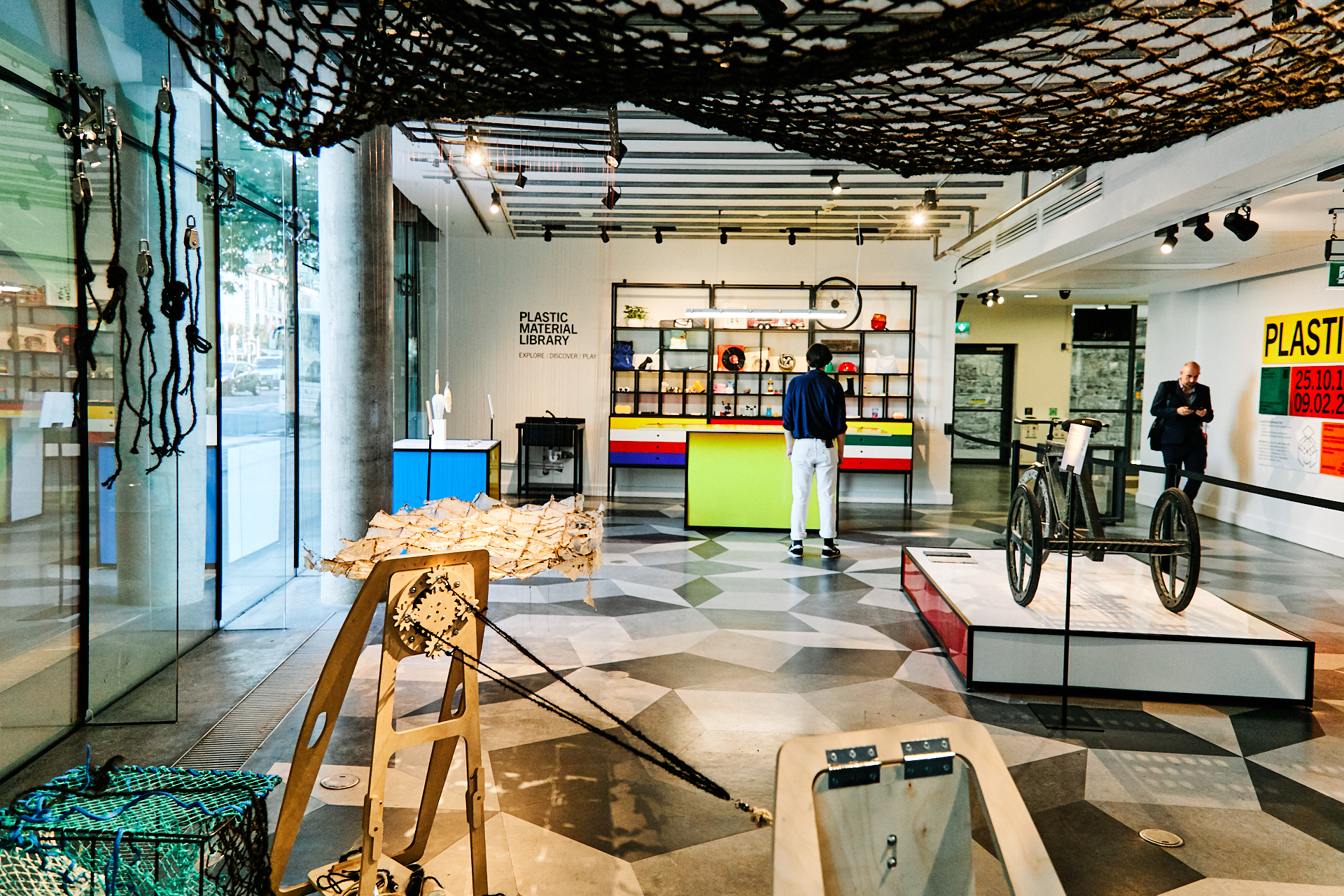
During this exhibition, the OPEN MIND Studio curriculum explored environmentalism and climate change, complex issues that necessitate transdisciplinary epistemic practices (Mejias et al. 2021) and knowledge from a variety of fields and cultures (Upadhyay and Han 2021). Students created their own bioplastics, learned to use a 3D printer, created activist banners and placards using plastic waste, developed innovative solutions to sustainability problems for specific user groups, and created zines to reflect on their learning experiences and evolving relationship with the theme (Brown et al. 2021).
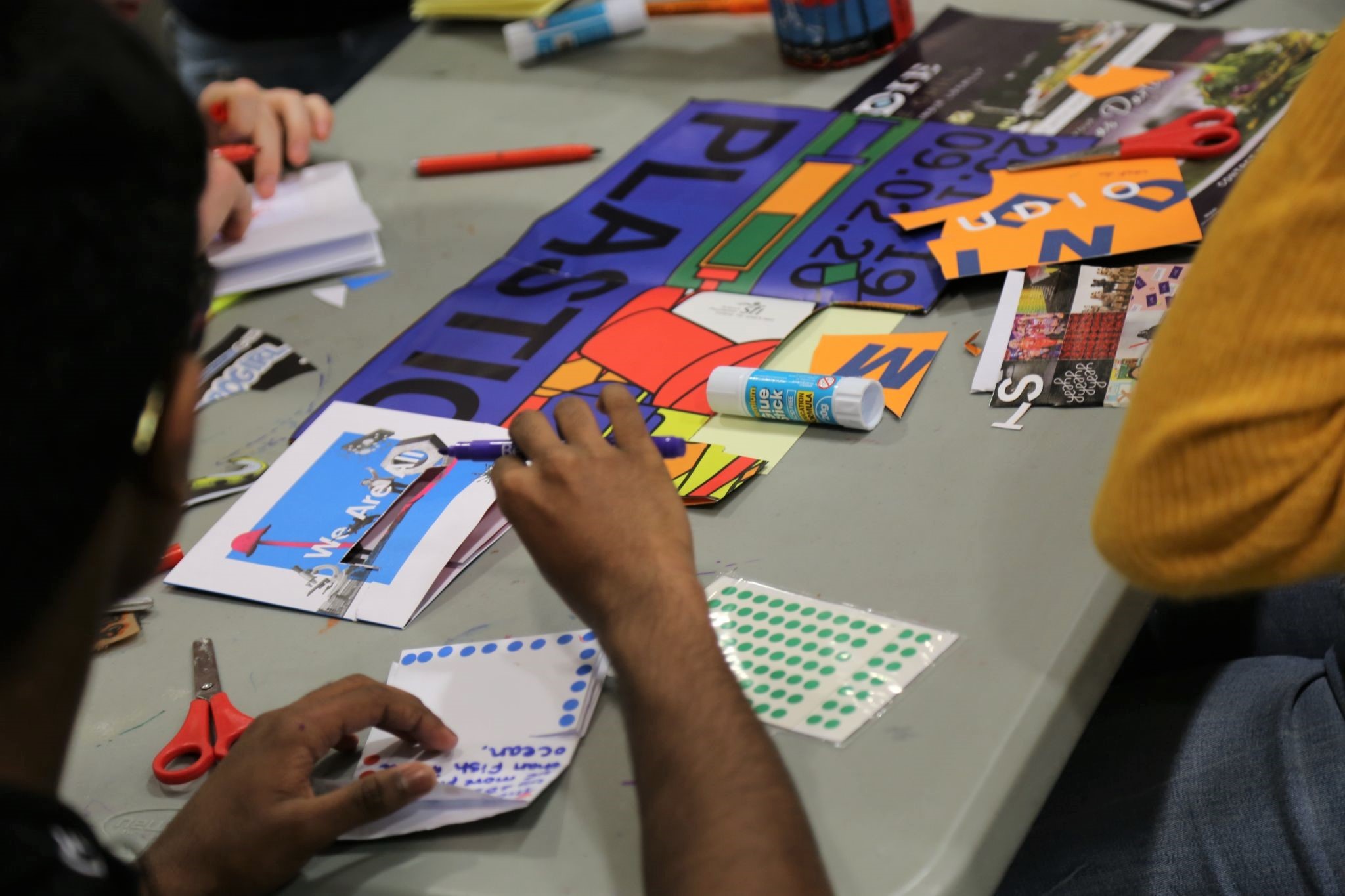
Longitudinal study participant Sinéad (participant names have been changed) came to OPEN MIND Studio during PLASTIC with an interest in physics, music, and visual arts. In her first interview, she described her future academic plans as most likely related to engineering or design. Sinéad particularly enjoyed the OPEN MIND Studio activity in which she and her small group investigated the chemical components of different plastics by creating their own bioplastic.
In her first interview, Sinéad described her reaction to the program. “Nearly everything that I learned was surprising to me, like the traumatic effects [of plastic waste], and the fact that like, this [object] says ‘recycle’ all over it, and we learned that it’s not all fully recyclable…. I just feel like most of the things that I learned weren’t general knowledge when they probably should be.”
Sinéad commented on the open-ended and learner-centered nature of the learning activities, which was unusual compared to her experiences in school. At first “I felt a little bit like, ‘Oh, maybe I’m a bit over my head’” when facilitators asked open-ended questions. “But then when I realized that everyone was kind of in the same situation and it was just us learning about it, it was easier. And the fact that it wasn’t like in school where if you didn’t know an answer you could get in trouble.” This engagement in real discourse around open-ended questions is an important marker of the kind of critical thinking required of wicked problems, intentionally incorporated into the program design.
Environmental Changes at Home and School
Sinéad and her family often spent time learning together (e.g., watching science documentaries). During OPEN MIND Studio, Sinéad said, “[I] would go home every day and I’d be like, ‘You won’t believe....’ And would tell my family everything. So through that we managed to change a good few things at home.”
In particular, Sinéad showed her mother and sister how to create fabric and beeswax food coverings to replace plastic wrap, just as they had done in the OPEN MIND Studio program. Sinéad said the activity appealed to her mother not only as an environmental move but also to save on a household cost. Sinéad enjoyed the activity both because it involved creativity and personalized designs and because of the environmental impact. “The fact that it could have such a good effect on the environment by doing such a small thing, I just really enjoyed the concept of that,” she said.
Sinéad also mentioned the program in a school class, and the teacher recommended she share her understanding of plastic waste with their student council. By the time she was first interviewed, approximately six months after participating in OPEN MIND Studio, Sinéad had helped the student council introduce composting and recycling to her school; previously students had used only one general bin. By the time of her second interview one year later, Sinéad’s school had completely switched over to a three-bin system. In addition, Sinéad had worked with the council to introduce compostable cutlery in the school canteen.
Sinéad also collaborated with several classmates to petition the local government for better drinking water in her school, furthering her environmental advocacy. The school water fountains occasionally dispensed what Sinéad described as “brown, murky water” and according to her, one of the teachers had found the water was “damaging the environment.” As a result, her class group sent an email to the local county council, along with documentation of the issue, and selected two student representatives to speak with the council. Sinéad was not one of these representatives but was part of the group who collaboratively prepared the messages to be conveyed. As a result of their advocacy efforts, the school’s water system was replaced. "It was really encouraging because, especially being in school, you don't really feel like you have a voice in things like that, in a bigger community, a lot of the time. So that was really uplifting and inspiring to keep trying to change things,” she stated.
Case 1: Conclusions
Sinéad’s out-of-school learning informed her future involvement in environmental activism with her family and in her school community. OPEN MIND Studio offered opportunities to engage her interest, increase her disciplinary knowledge about plastic waste, and develop hyper-localized solutions to plastic waste in her family home.
OPEN MIND Studio asked learners to collaboratively imagine local solutions for environmental concerns, something that Sinéad later undertook at her own school. There, peers and educators provided social and material support by connecting Sinéad with the student council and putting funding toward a new recycling and composting system, building on the funds of knowledge she brought from OPEN MIND Studio. They successfully mobilized an evidence-based campaign for a safer water system for the school, leveraging a convergence of shared interests. Importantly, these actions along the extended learning pathway are also markers of a developing environmental activist identity for Sinéad.
Youth Activism and OPEN MIND Studio, Case 2: Michael and Mental Health Advocacy
Somewhat presciently, the Science Gallery Dublin 2018–2019 season INTIMACY asked audiences to consider whether it was possible for humans to connect when physically disconnected from one another, and whether the digital revolution has adjusted our conception of closeness. The exhibition touched on themes including loneliness, romantic connection, consent, and the role of public spaces in fostering community-building and connection.
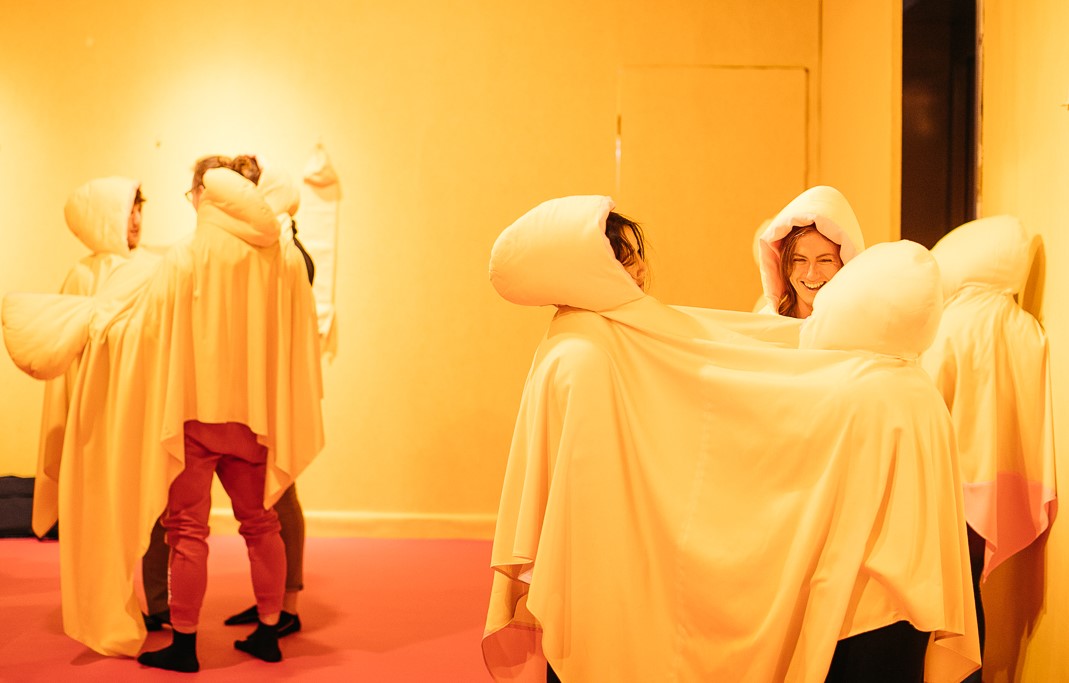
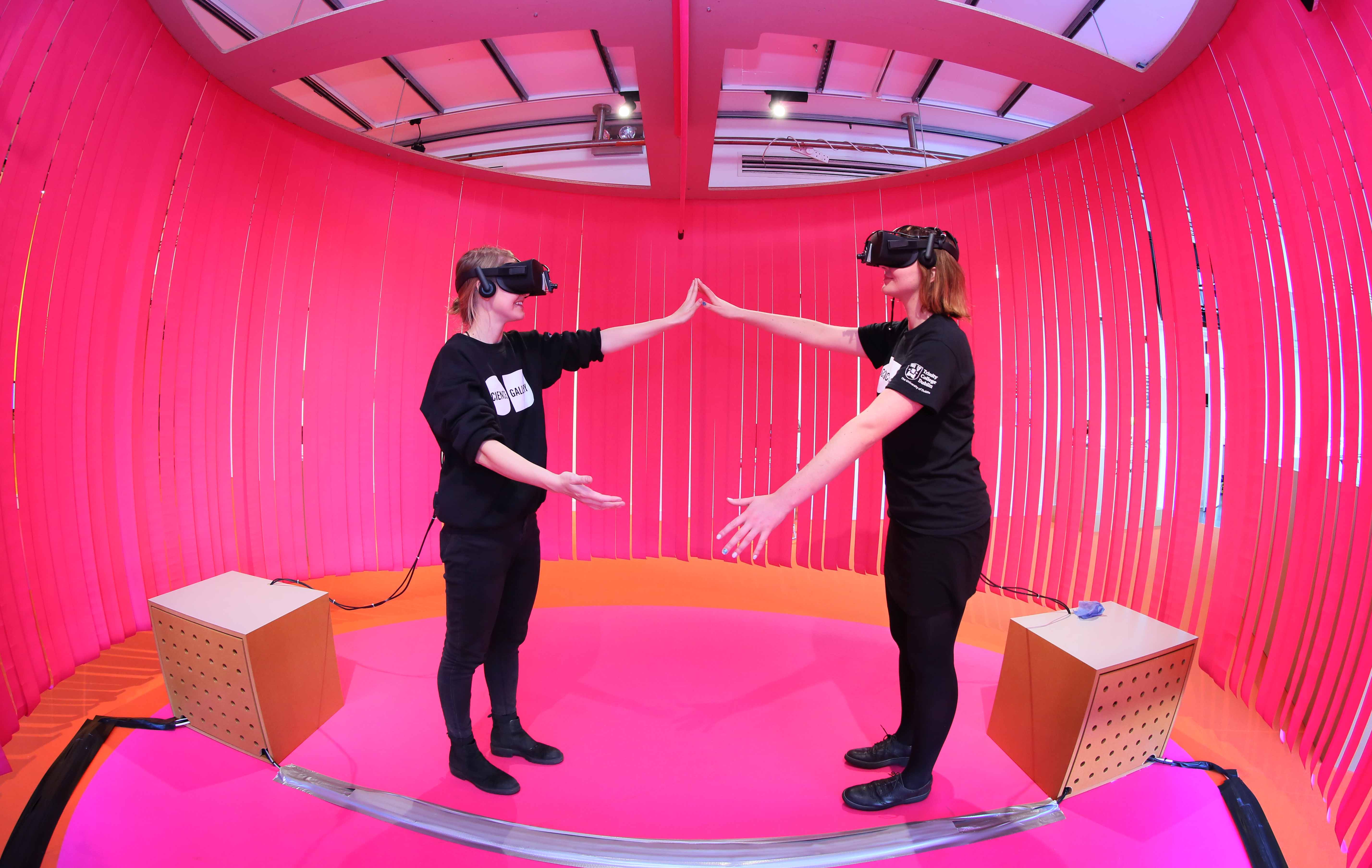
During INTIMACY, the focus for OPEN MIND Studio was mental health and wellbeing, linking to neuroscience and psychology. During these OPEN MIND Studio editions, the culminating collaborative project was to develop an idea to address a particular “intimacy-related” societal challenge facing a particular demographic group.
Longitudinal study participant Michael joined an INTIMACY-themed OPEN MIND Studio with a wide range of existing interests. In his initial interview, he described his plans for university as varied, mentioning engineering, physics, psychology, and photography. He had been part of a Coder Dojo coding club at his school, was an avid photographer, and enjoyed playing piano.
Mental Health Activism in School, Outside School, and Online
In his first interview, Michael related that OPEN MIND Studio had inspired him to get involved in mental health issues within his own school, saying, “The TY week on mental health definitely made me far, far more interested in psychology and mental health.” He directly attributed his involvement in OPEN MIND Studio as the reason he signed up to be part of his school’s Pieta Amber Flag committee, which promotes mental health within his school. His chapter had been involved in organizing a Gratitude Day, Cycle Against Suicide, and a Darkness Into Light walk.
In his second interview during the pandemic in the autumn of 2020, Michael described an expanded involvement in mental health activism, beyond the bounds of his school. He had joined a national student organization and convened a group of charities and non-governmental organizations, including Science Gallery Dublin, to contribute to the development of resources for youth mental health. “I'm, I suppose, leading the project and facilitating the working group,” he said. Michael said that while there are a lot of resources around mental health, often they are not comprehensive or written in a way that adolescents can understand, so the working group is trying to meet that need. Michael also said he was inspired by a mental health–related co-creation project that he joined in Science Gallery Dublin after his OPEN MIND Studio week, in which young people worked alongside adults in democratic participatory decision-making processes.
As Michael became an advocate in one area, he also became involved with many other causes. Through his mental health work, Michael became involved with Fridays for Future, his Comhairle na nÓg local youth council, and another local youth activist group. As a result, Michael has made many friends around the country with a shared interest in activism; during the COVID-19 pandemic and associated lockdown, many of them met up nightly over Zoom, despite some of them having never met in person. He comments that he actually made new friends during the lockdown, unlike many other people, and that the social circle gained through his activism was a great support during this time.
Case 2: Conclusions
In this case, Michael’s learning pathway opened up into a set of different, related initiatives and activities—with a growing leadership role and deeper identification with mental health communication and education. His activism engaged him with many communities: his school, his local out-of-school youth activist community, a national network of youth activists, and with others online via social media. Like Sinéad, he brought disciplinary knowledge, interest, and a collaborative approach to problems from the OPEN MIND Studio into these other settings, where his interest in this work grew and became more established. Science Gallery Dublin provided further social and material resources for his activism, and staff joined the mental health working group Michael is leading. This activism also fostered deep social connections, an especially important support during the pandemic.
How Can Art-Science Programs Better Support Social Action and Activism?
Of course, what engages one person may not spark the interest of another. Sinéad and Michael were both interested in the topics explored during the OPEN MIND Studio editions they attended, and they used their developing understanding to effect changes in other settings in their lives. Hidi and Renninger (2006) point out that situational interest in a particular activity or program does not always lead to sustained engagement. Learning pathways often meander, especially when young people are not met with supports across settings or if they encounter barriers and marginalization (Bell et al. 2012).
Luke, Climate Change Activism, and Frustration
Sinéad and Michael represent “success stories”—but what about out-of-school learning that doesn’t result in prolonged community engagement? Luke, another longitudinal study participant, got involved in environmental activism but experienced frustration when he did not see his efforts resulting in change. He had been involved in a variety of programs and activities outside of school during Transition Year, including coding, debate, and theater. He was deeply involved with both Coder Dojo and the Trinity Walton Club, out-of-school programs involving coding and science.
A few months before attending a Science Gallery Dublin program, Luke had created an app as part of a Coder Dojo contest that would identify whether an object was recyclable. This app project involved a lot of prototyping, trial and error, and “a lot of late nights,” and Luke ended up winning an award for this work. When selecting projects, in general, Luke said he wants his work to be original and make “a positive change.”
Luke participated in the ARTificial Intelligence Lab summer program at Science Gallery Dublin. While the program made clear connections between society, art, and technology, in his interview Luke primarily remembered the engineering practices he engaged in, specifically working with physical motors. At around the same time, Luke also began attending Fridays for Future protests. Later, he became a delegate in a youth summit on climate, which put together 10 recommendations for elected officials and other adults.
During and after the process, though, Luke expressed frustration with what he perceived as the government’s lack of true commitment to environmentalism. "I would've liked them to have a sort of a Dáil [Irish parliament] debate on the recommendations, and to take them seriously. And not just be like, 'Oh, you know, you rocked the world, guys,' and then get on to the next thing. There should've been more action, and even acknowledging it." After attending this youth summit, Luke did not report any other involvement in climate activism. The group of youth delegates had created a shared WhatsApp group chat but had not used it to plan future action together. In this case, there is less of a clear line between Luke’s participation in Science Gallery Dublin’s program and his environmental activism. His experience of the ARTificial Intelligence Lab summer program may have done more to deepen his disciplinary interest in electronics than in environmentalism—which is a fine outcome, of course.
However, this example offers two insights. First, it illustrates the value of the holistic view of young people’s learning obtained through longitudinal ethnographic study. By asking about the different interests these young people pursue within and outside school, we can gain an ecological perspective on how different learning experiences can overlap in some ways but not others. In this case, we could track how Luke’s interest in creating positive change through a recycling app and involvement in Fridays for Future protests may have led him to join this youth climate assembly. Second, this case has pedagogical implications for educators who are working to support and encourage young people in their activist endeavors:
- to help learners celebrate the journey, and not only the successes;
- to remind youth that not seeing an immediate sea-change is not a failure, but a natural part of a process;
- to encourage patience and persistence; and
- to learn the benefits of sustained strong opposition in the face of stonewalling.
We see Luke’s story as a reminder that out-of-school programs may need to prepare a young person for the emotional labor that comes with activism—and perhaps the need to engage in collective healing within the social movement. How do we as facilitators of learning scaffold the process and develop youth resilience and tactics in the face of the long, slow road to change? How might we help them better “see the system” and use the resources they do have at their disposal—like the WhatsApp group, in Luke’s case? What do they need for this emotional labor? And how might institutions better partner across settings to meet these needs?
One potential approach to support further activism is for informal learning organizations to provide multiple opportunities for youth to engage with complex topics and issues. OPEN MIND Studio is one of many different Science Gallery Dublin public programs and events for teenagers and young adults. By hiring facilitators and mediators within the target demographic, OPEN MIND Studio helps participants see Science Gallery Dublin as a place for people like them. Luke returned to participate in a mentoring program, taking career-focused workshops with Science Gallery Dublin staff, while Michael participated in further Science Gallery Dublin programs, and was featured as a panelist on a public-facing webinar.
Conclusions: Supporting Youth Learning Pathways for Science-Informed Community Engagement
Sinéad, Michael, and Luke engaged in authentic problem-solving activities as part of an informal learning program intentionally designed to shift their critical consciousness and disciplinary understanding. They learned to collaborate and engage in speculative design with strangers as they grappled with wicked problems. These activities encouraged them to explore and answer the question, “What kind of future do we want to create?” Following this initial spark of interest and learning, each pursued the application of their understanding through social and civic actions in ways that are relevant and meaningful to them across different temporal and geographic scales. Sinéad and Michael developed identities tied to social action and civic participation that both deepened and broadened over time. Mindfully designing STEAM programs to ignite such a spark can provide a unique and expansive platform upon which learners may begin to imagine and build civic-minded interventions. Researching transdisciplinary learning over time can provide a deeper understanding of how educators can better support youth in their efforts to shape the future they hope to inhabit—by confronting inequitable systems and working to create more flourishing and just conditions.
Acknowledgments
This work was supported by a Science Learning+ grant from Wellcome Trust (UK/Ireland) and National Science Foundation (US).
The youth mental health & wellbeing co-creation project mentioned was OPEN MIND, an initiative of the SISCODE project delivered by Science Gallery Dublin, which received funding from the European Union's Horizon 2020 Research and Innovation programme under grant agreement No 788217.
Mairéad Hurley (mairead.hurley@tcd.ie) is a Research Fellow, Autumn Brown is a PhD researcher, and Joseph Roche is an Assistant Professor, all at the Science & Society Research Group, School of Education, Trinity College Dublin, Ireland. Abby Rhinehart and Nancy Price are Research Scientists at the Institute for Science + Math Education, and Philip Bell is Professor of Education and holds the Shauna C. Larson Chair in Learning Sciences, all at the University of Washington in Seattle.
citation: Hurley, M., A. Rhinehart, P. Bell, A. Brown, N. Price, and J. Roche. 2022. Designing for future action: How STEAM programming can support youth engagement in community changemaking projects. Connected Science Learning 4 (1). https://www.nsta.org/connected-science-learning/connected-science-learning-january-february-2022/designing-future-action
Climate Change Crosscutting Concepts Equity Interdisciplinary STEM Informal Education


